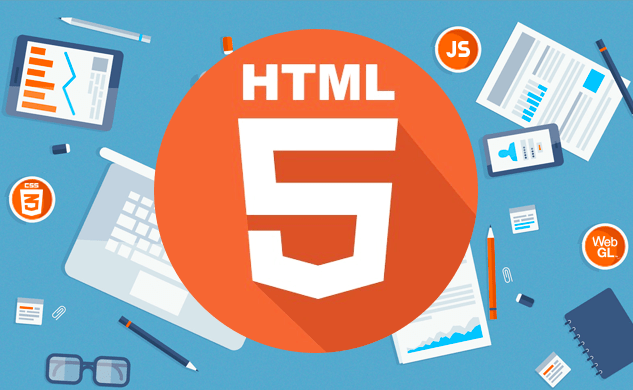Cao News Hub
Your daily source for trending news and informative articles.
HTML5 Development: Where Old Meets New in Web Magic
Discover the enchanting blend of traditional and modern web magic with HTML5 development. Transform your skills and create stunning websites today!
Exploring the Transition from HTML4 to HTML5: Key Features and Enhancements
The transition from HTML4 to HTML5 marks a significant evolution in web development, introducing a range of new features that enhance the functionality and accessibility of web pages. One of the most important changes is the streamlined syntax, allowing for cleaner code that is easier to read and maintain. Key enhancements include new semantic elements such as <header>, <footer>, <article>, and <section>, which provide better organization and structure to HTML documents. These semantic elements not only improve search engine optimization (SEO) but also enhance the user experience by making content more understandable for both users and machines.
Additionally, HTML5 introduces support for multimedia elements like <audio> and <video>, allowing developers to embed audio and video content seamlessly without needing third-party plugins. This feature alone has transformed how media is integrated into web pages, fostering a more interactive experience. Furthermore, the adoption of the Canvas API opens up possibilities for dynamic graphics and animations, empowering developers to create visually stunning applications directly in the browser. Overall, the shift to HTML5 not only enriches web applications but also paves the way for more innovative and responsive web designs.

How HTML5 Revolutionizes Web Development: A Deep Dive into New Technologies
HTML5 has fundamentally transformed the landscape of web development by introducing a multitude of new features and functionalities that enhance user experience. One of the most significant developments is the support for multimedia elements like audio and video tags, which allow developers to easily embed rich media without relying on third-party plugins. This seamless integration not only improves page load times but also leads to better SEO outcomes, as search engines favor content-rich pages. Furthermore, the intuitive structure of HTML5 promotes the use of semantic elements, enhancing the accessibility and searchability of web content.
In addition to multimedia capabilities, HTML5 introduces APIs such as the Canvas API and Geolocation API. The Canvas API empowers developers to create dynamic graphics, animations, and interactive applications directly within the browser, eliminating the need for external graphics software. Meanwhile, the Geolocation API enables web applications to provide location-based services, enhancing user engagement and personalization. As websites become increasingly interactive and user-focused, embracing the technologies offered by HTML5 is essential for developers aiming to stay ahead in the competitive web development landscape.
Is HTML5 the Future of Web Development? Debunking Myths and Highlighting Benefits
As web development continues to evolve, many developers and businesses are asking, Is HTML5 the future of web development? While some myths persist about the limitations of HTML5, such as its alleged lack of support for complex applications and functionalities, the reality is quite different. HTML5 not only accommodates advanced multimedia elements without extensive external plugins but also enhances user experiences through its rich API capabilities. This includes features like Web Storage for better data management and Geolocation for location-aware applications, proving that HTML5 is well-equipped to meet modern development needs.
Moreover, embracing HTML5 presents a multitude of benefits for developers and businesses alike. Firstly, the use of semantic elements enhances search engine optimization (SEO), as search engines can more effectively parse content. Additionally, with responsive design becoming essential in today's mobile-first world, HTML5 offers flexibility in creating websites that are optimized for any device. As we debunk the myths surrounding HTML5, it becomes clear that this markup language is not just a passing trend but a foundational technology paving the way for the future of web development.